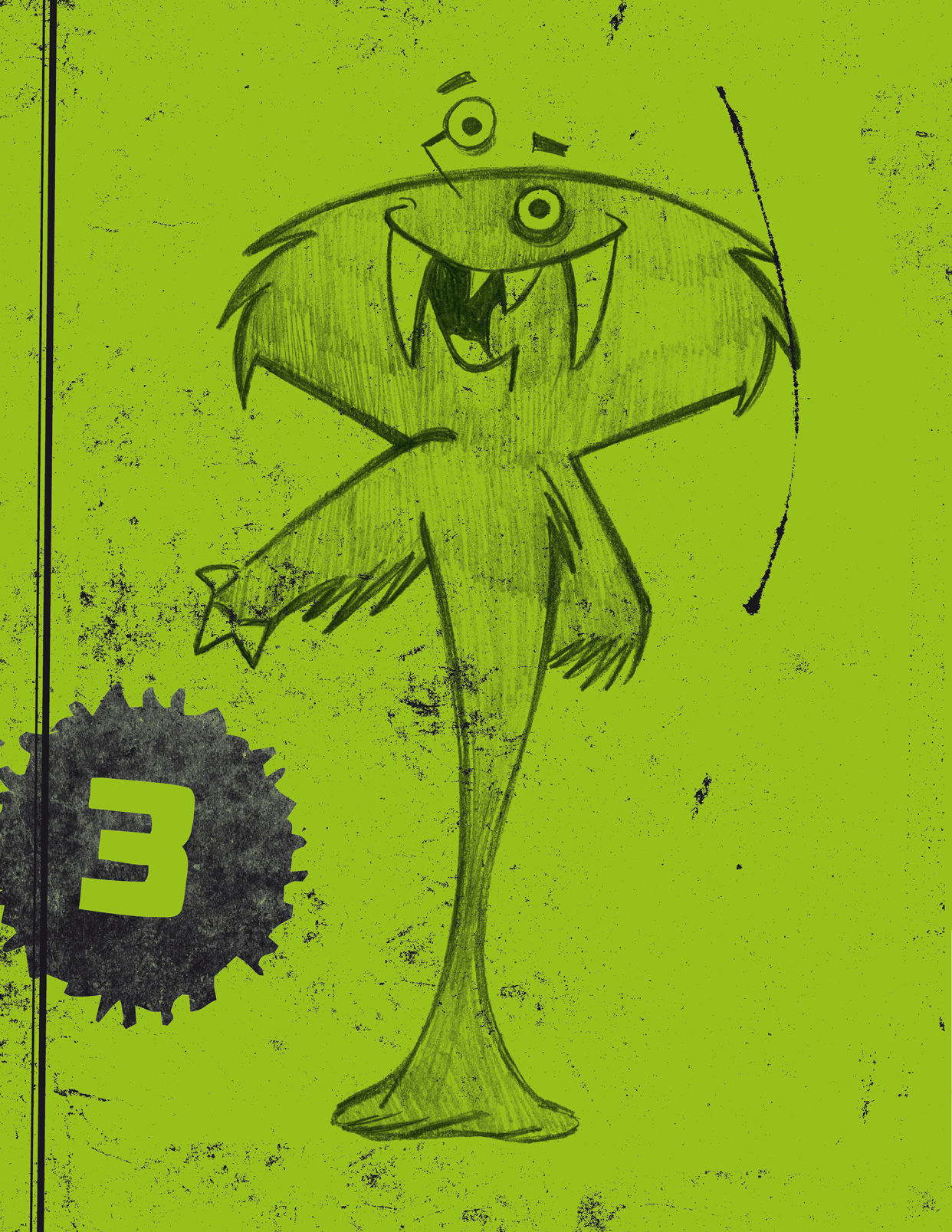



MONSTERS born of dreams and nightmares are mega-popular in animated movies and children’s books. There’s an art to designing make-believe cartoon monsters. They are often drawn as fuzzy creatures with curious—often extreme—proportions. It’s not uncommon to see a monster with its head where its tummy should be!
A monster that looks like a mammal can be drawn with tentacles for arms. You can even rearrange facial features to create a wild appearance. Although there are no hard-and-fast rules about how to create an original make-believe cartoon monster, I have found that the following elements are very helpful in designing funny, whimscial monsters with strong audience appeal:
• A cute, funny, or angry personality
• Unusual shapes for the head and body
• Odd proportions
• As simple a design as possible given its unusual qualities
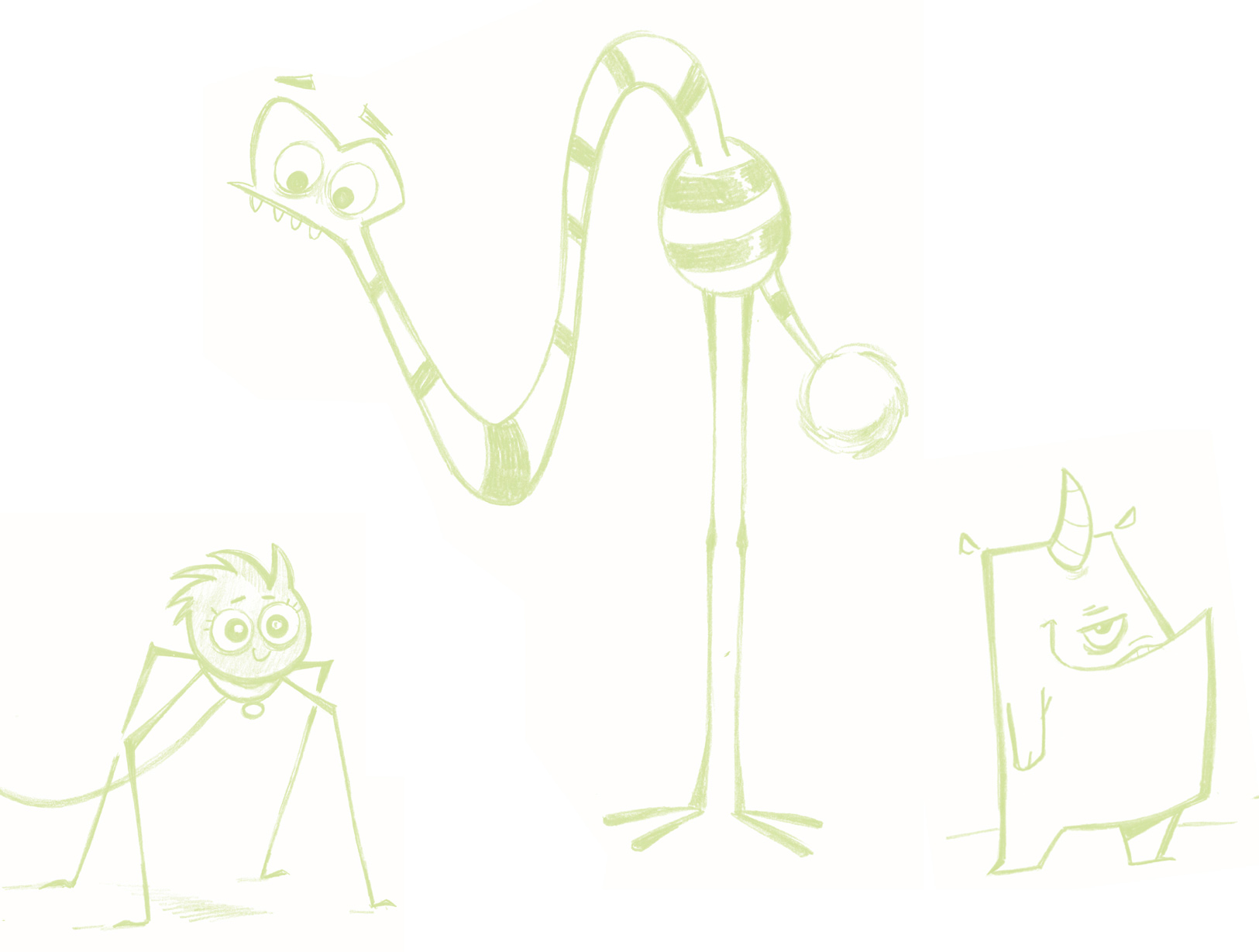

Here I used an ostrich as the basis for this monster. Starting with a funny animal makes the process easier. It’s not necessary for the viewer to recognize that you started with an ostrich. The only purpose the animal serves is to give you inspiration. The animal type you decide to use as the basis for your monster is for you alone. This creature is a good example of how you can create a funny look by subtracting elements, not just by adding them. It has no beak and no wings, giving it a unique and humorous appearance.
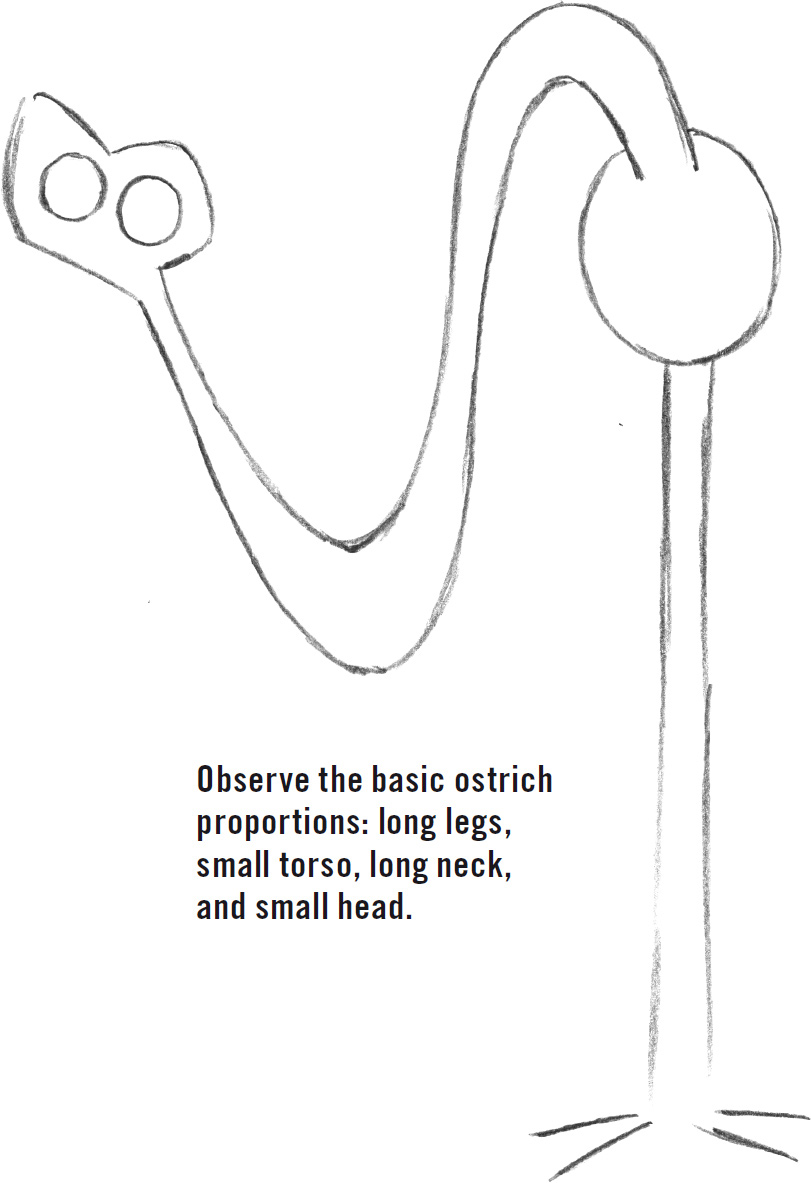

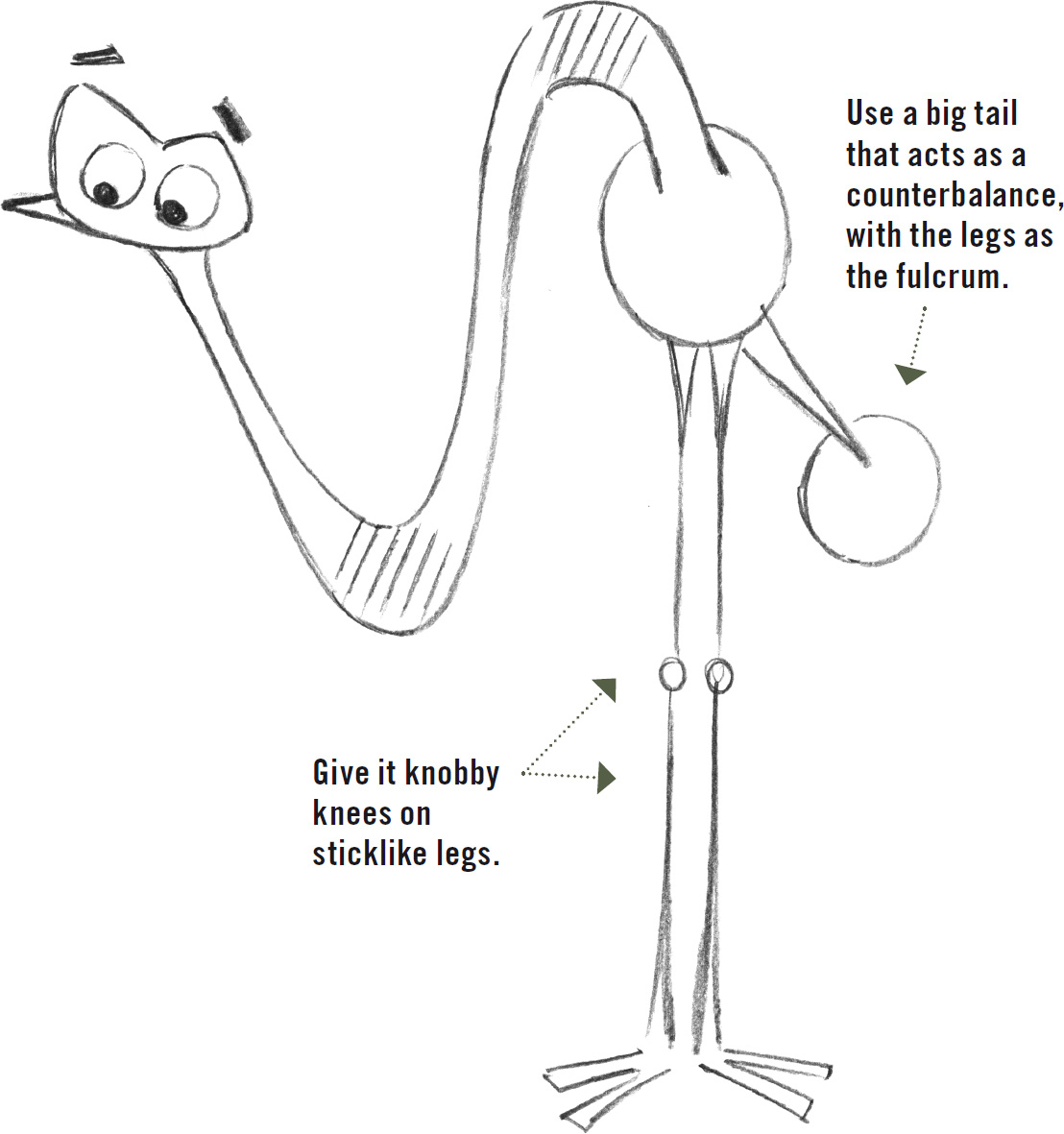

Baby monsters are almost always cute, with big eyes and small features. They are very hungry when first born and will eat anything. Anything. That is why the mother looks somewhat nervous.
You’ll have many opportunities in cartooning to draw a tubelike shape that can be used for a neck, arm, trunk, and the like. To make it funny and avoid a monotonous look, draw it with an uneven thickness.
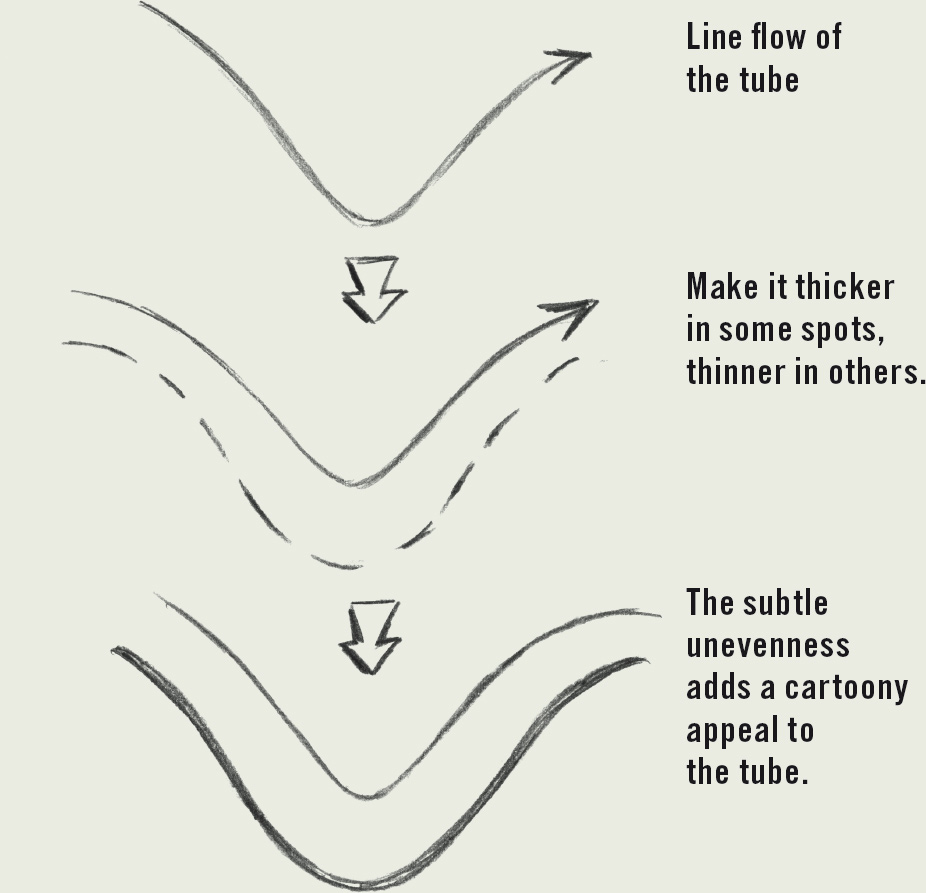

THE MONSTER LIST OF CHARACTER-GENERATING IDEAS
You can create original monsters by using one or more of the following techniques:
• Use an animal as the basis for the design.
• Combine two or more animal types.
• Exaggerate an ordinary physical trait: teeth, eyes, tail, and so on.
• Caricature a body type, such as skinny, muscular, hefty, or gawky.
• Draw the eyes and mouth in weird places.
• Give the monster too many arms or legs. Or eliminate arms and base the character on a simple shape.
• Build the character around an action, for example, a monster that blows bubbles from its ears.
• Create different ways for your monster to get around, such as slithering, flying, swimming, rolling, and bouncing.
• Add funny textures (such as fur or scales) and eye-catching extras (such as horns or a trunk).
For the next monster, let’s take the funniest features of two different animals and combine them to create a single nonsensical, funny-looking character. If a scientist were to create a monster by combining two different species, he probably would take an equal amount of traits from each animal and then experiment on it. Cartoonists approach character design differently: We borrow only the elements we think are funny. It doesn’t matter if you favor one animal’s traits over the other’s. And we don’t go, “mwa-ha-ha!” when we’re done.


From the wild boar, borrow deep-set eyes, little ears, tusks, and a hairy coat.


From the elephant, borrow the trunk.
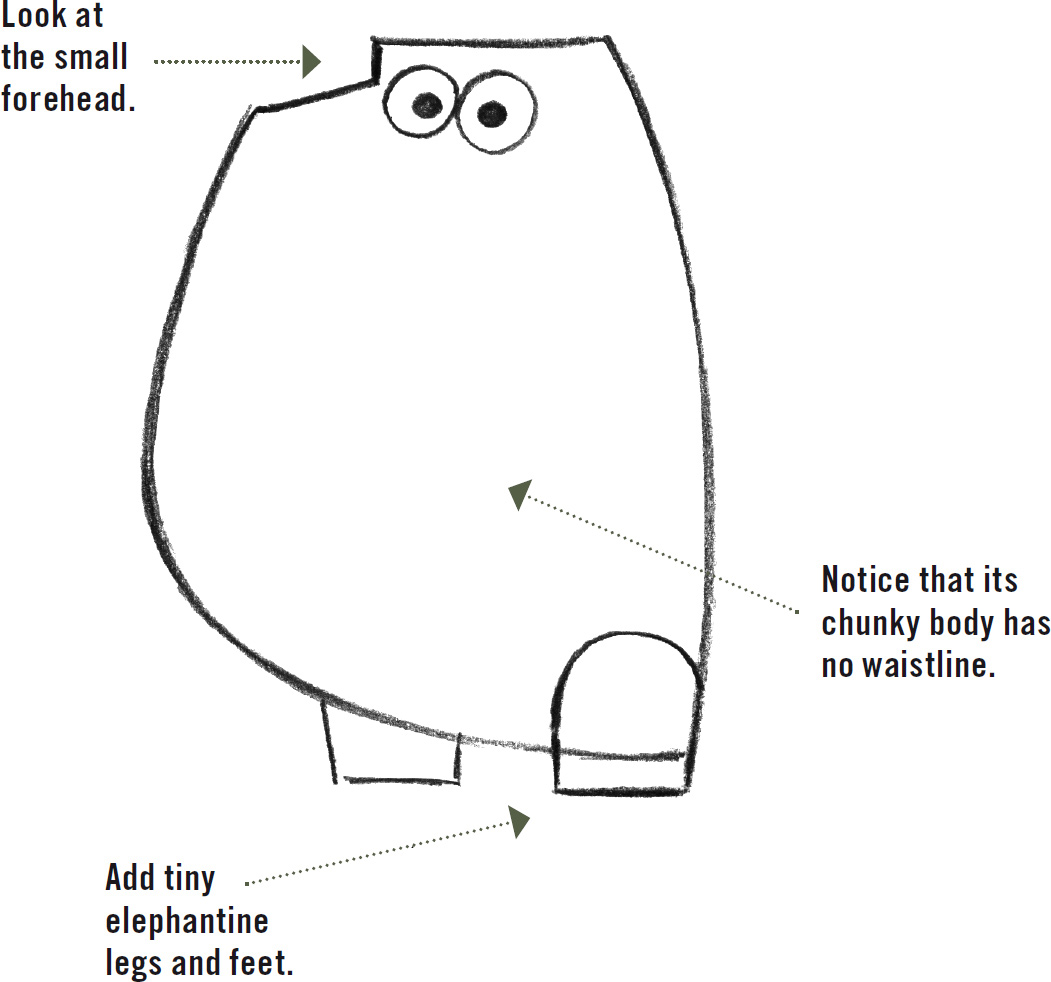

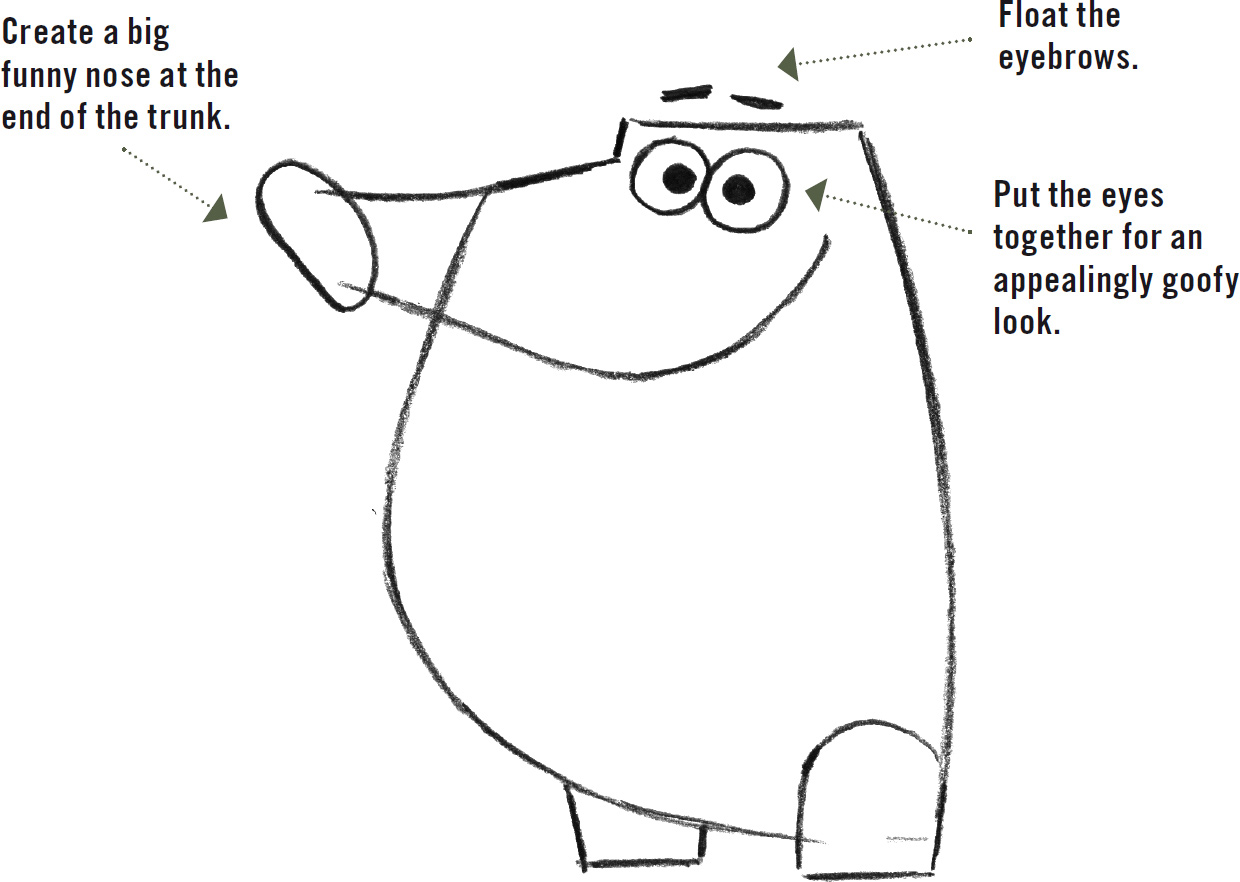

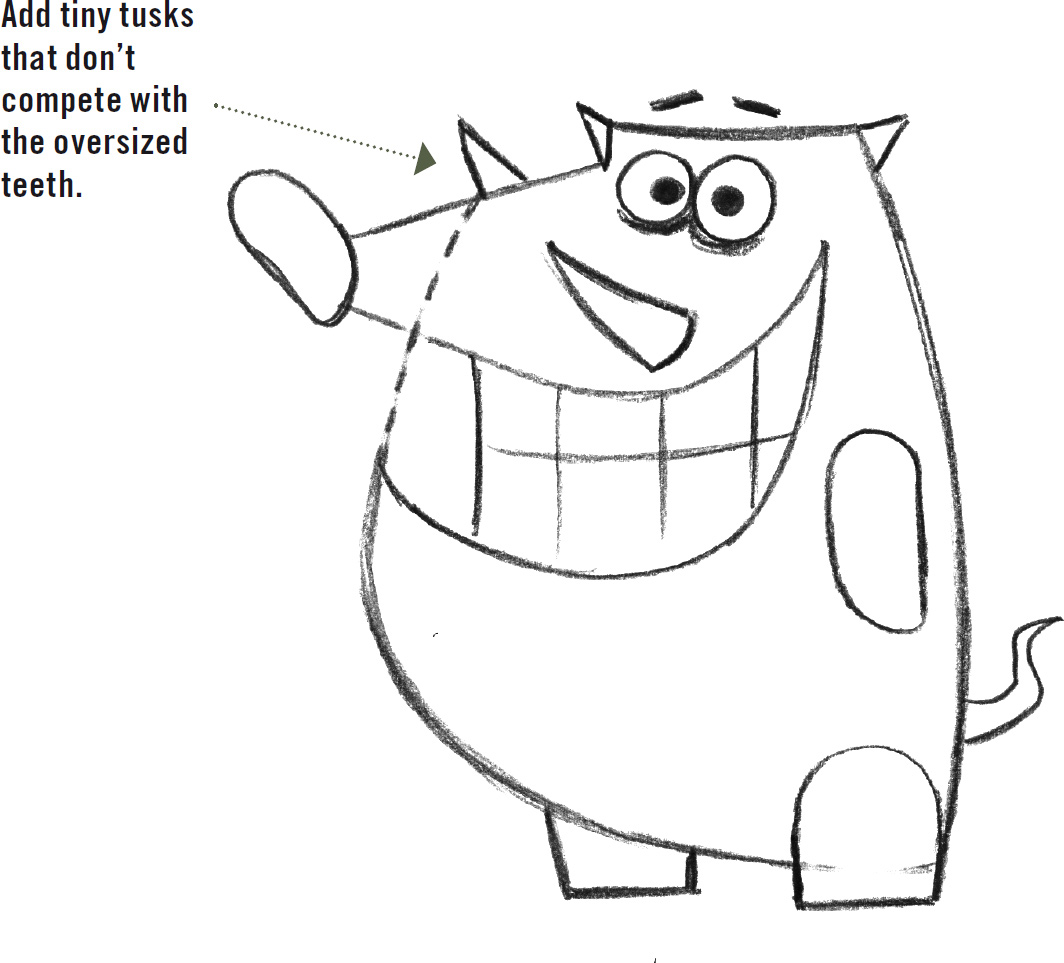



Voilà! Monster. First, it’ll eat the grapes. Then the hand.
This monster is a ball of fluff with insect legs. By positioning each leg differently, you create a humorous tangle of confusion. I can only imagine how fast this thing must be able to scamper!
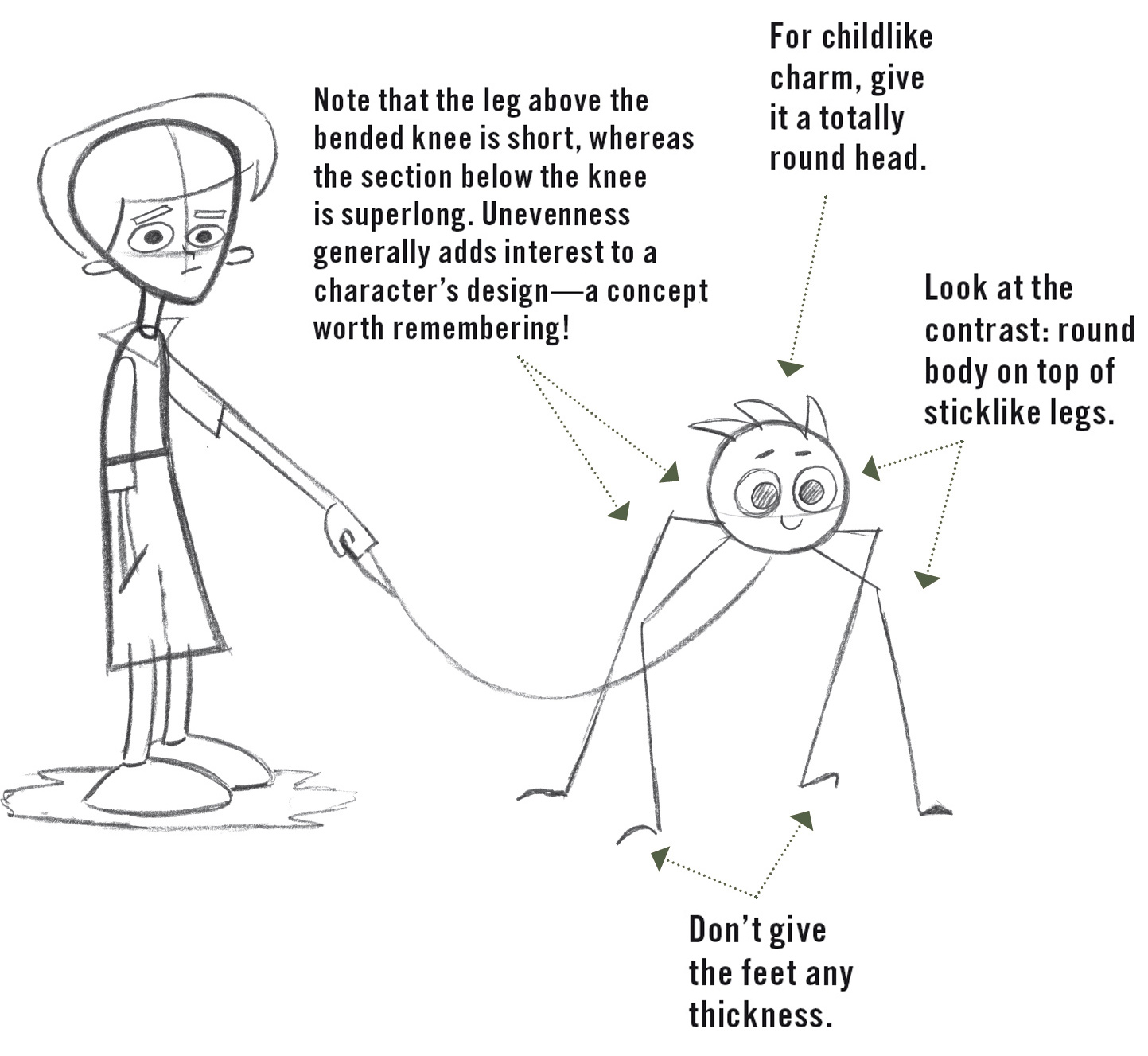



Does it have to stop at every tree?
COMPARING SYMMETRICAL TO ASYMMETRICAL PLACEMENT
Notice how much funnier the monster’s jumble of legs appears to be when they are not posed symmetrically:
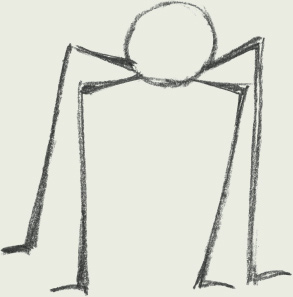

Legs evenly placed apart


Legs evenly placed together
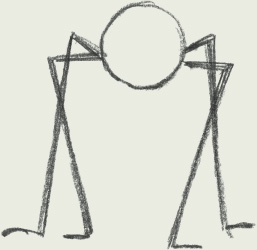

Legs unevenly placed: funnier
Often, a very busy design isn’t really imaginative but is actually the opposite. If you start with a fresh, fun, simple idea, you’ll have no need to overcomplicate it. You should still feel free to add monstrous features to your character to finish it. But those features can also be appealingly simple.


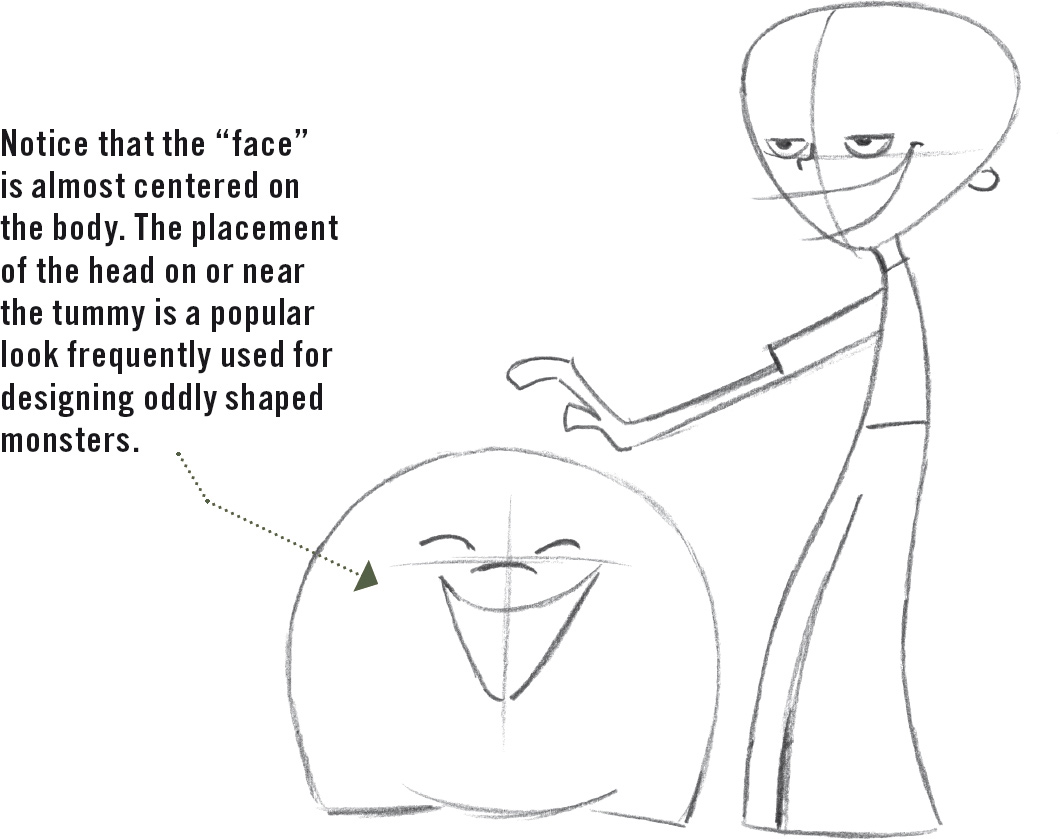

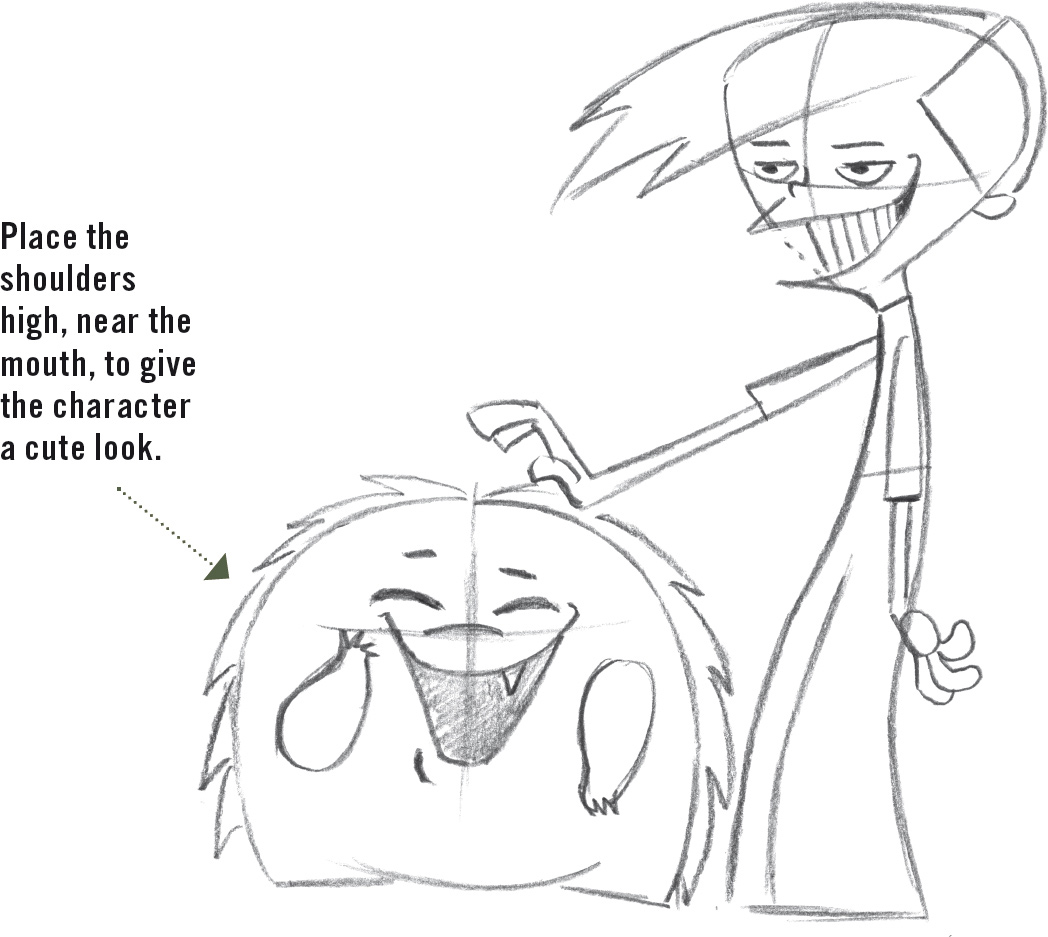



Don’t get this monster if you’re not willing to groom it.
RESPECT THE OUTLINE
When you create deep ruffles on a fuzzy character, attach ruffles to the body’s outline or you may start to lose the integrity of the shape (in this case a circle).
Notice that on the first diagram, the ruffles invade the outline. As a result, the body looks less round. The second example shows the indented parts of the ruffles touching but not invading the outline. This version appears rounder—and cuter.
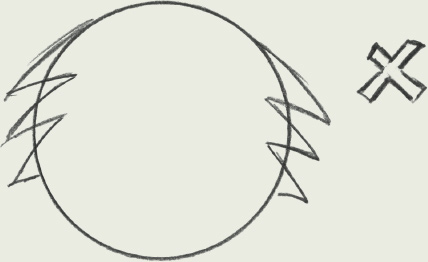

The zigzaggy lines invade the outline of the body: less effective.
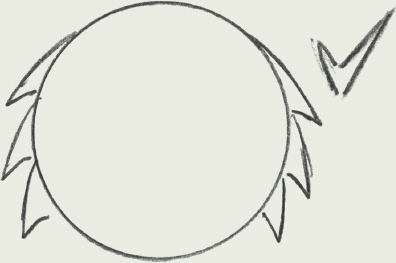

The zigzaggy lines do not invade the outline of the body: more effective.
This monster is based on the basic shape of a child’s plush doll. As such, it vaguely approximates the human form. Plush doll constructions are wonderful starting points from which you can mold an original monster character.
These adorable little monsters have a heck of a time trying to scare humans. When faced with a monster of this type, humans don’t generally run away in fear; instead, they prefer to squeeze the monster mercilessly.


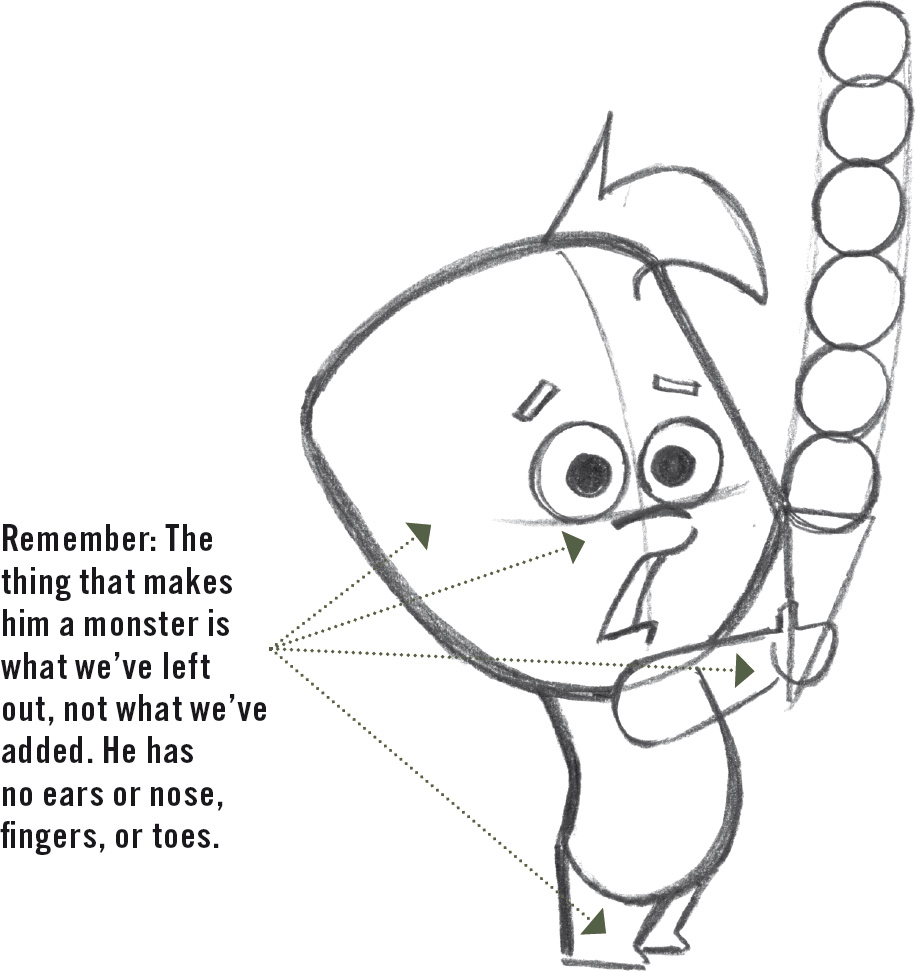

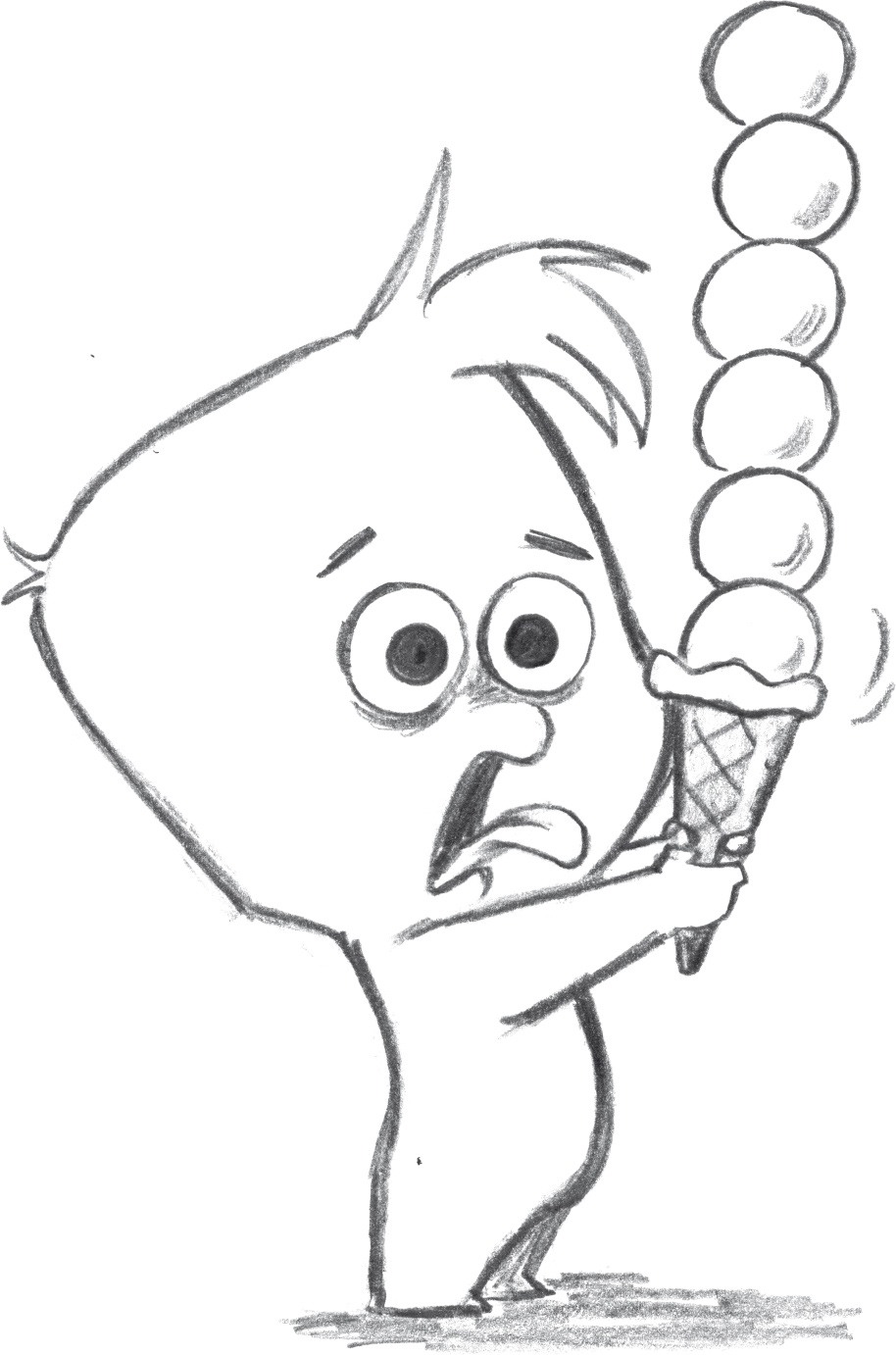

No dessert until you finish eating that person!
The placement of the shoulders is important for an adorable look. When the shoulder is drawn high enough on a cute character to touch or overlap the character’s chin, it creates a childlike “dearness” that is quite appealing.
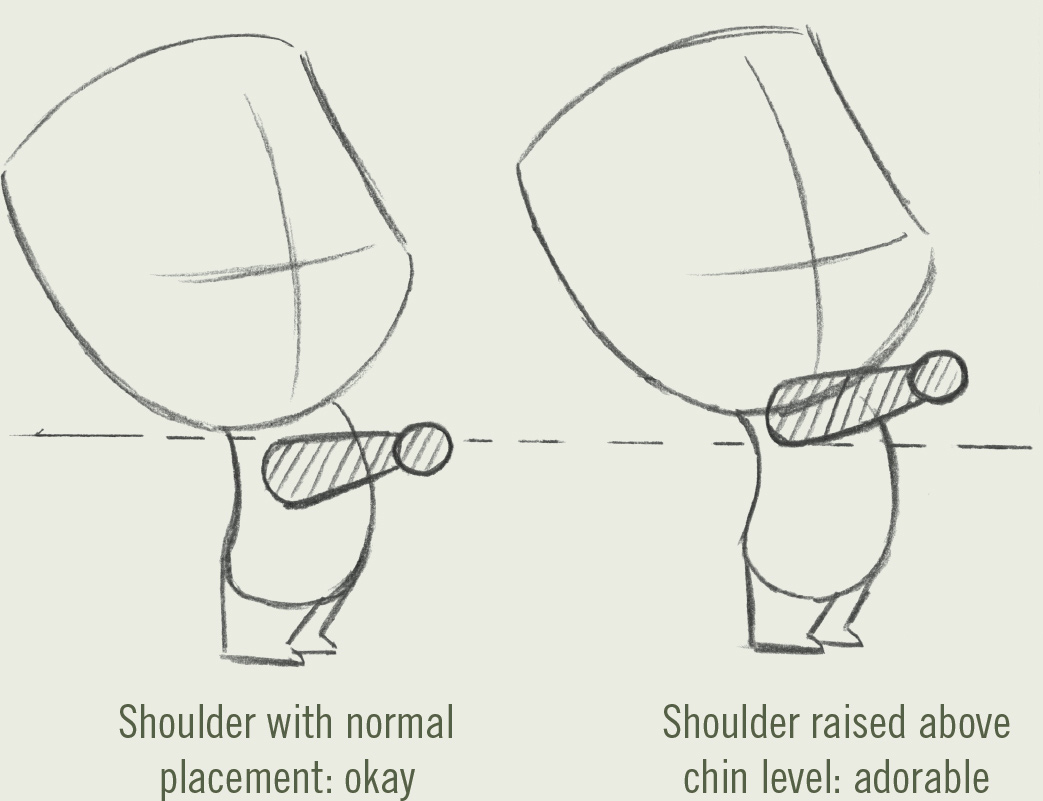

If you thought a teenage boy was an insatiable eating machine, you ain’t seen nothing yet. Allow me to introduce the always popular big mouth–type monster. This voracious character gives new meaning to the term fast food. Its mouth is its most prominent feature. By itself, that wouldn’t make it funny. What makes it funny are its proportions: Its mouth takes up nearly the entire length of its body.


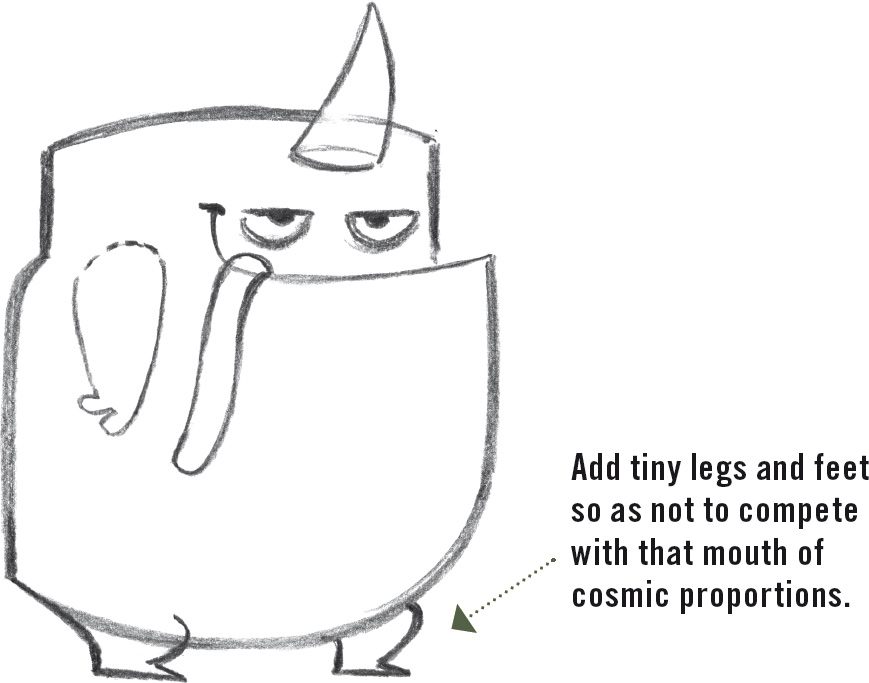

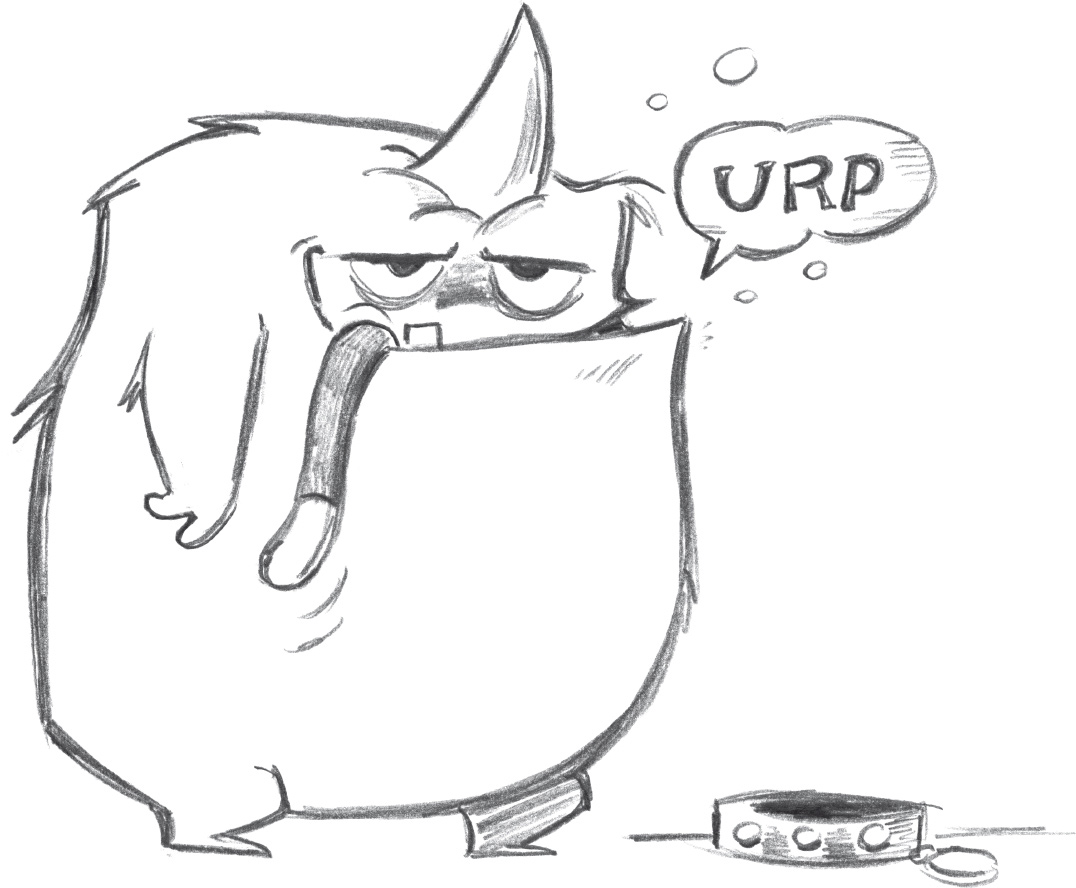

It’s funnier to show the result of a wacky action than to see it actually taking place. The burp communicates to the viewer that the gag is done and now it’s time for laughter. It’s used as a subconscious signal. And it works. Leaving the empty collar is another funny touch.
STRETCHING FOR A JOKE!
To create a sight gag with a mouth-based monster, open the mouth up wide and s-t-r-e-t-c-h it! Stretching the mouth requires adding some length (or height) to your character. This extra length is taken up by the huge vertical stretch of the mouth. If you compare the two examples, you can see that the open-mouthed monster is slightly taller than the closed-mouthed monster.
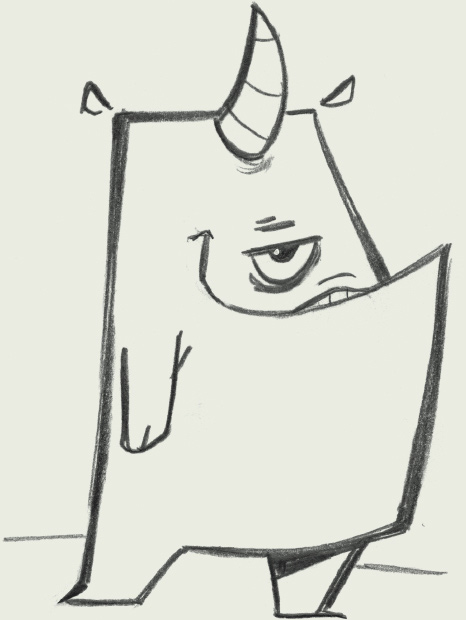

Closed mouth: slightly shorter
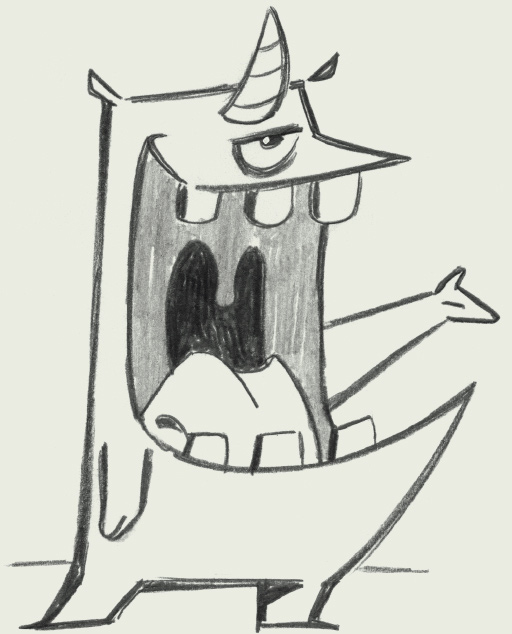

Opened mouth with s-t-r-e-t-c-h: slightly taller
You might have assumed that because cartoon monsters are so zany, they should be drawn with understated or subtle expressions to balance the look. That’s good, sound reasoning—for everything, that is, except cartoon monsters. Subtle and small expressions would get drowned out by the over-the-top character designs of these monsters. They couldn’t compete. Therefore, the expressions have to be enormous, exuberant, or, if a droll expression is called for, diabolically droll.
These big expressions should have a manic quality because they also convey a weird sense of danger. For example, when a cartoon monster greets you for the first time, it’s with the level of excitement of a fan meeting her favorite musical celebrity. It’s just too happy. It’s bizzare—and funny!
This character is a good example of how a cuckoo look can be created from quite ordinary shapes. It’s all in how you arrange them.
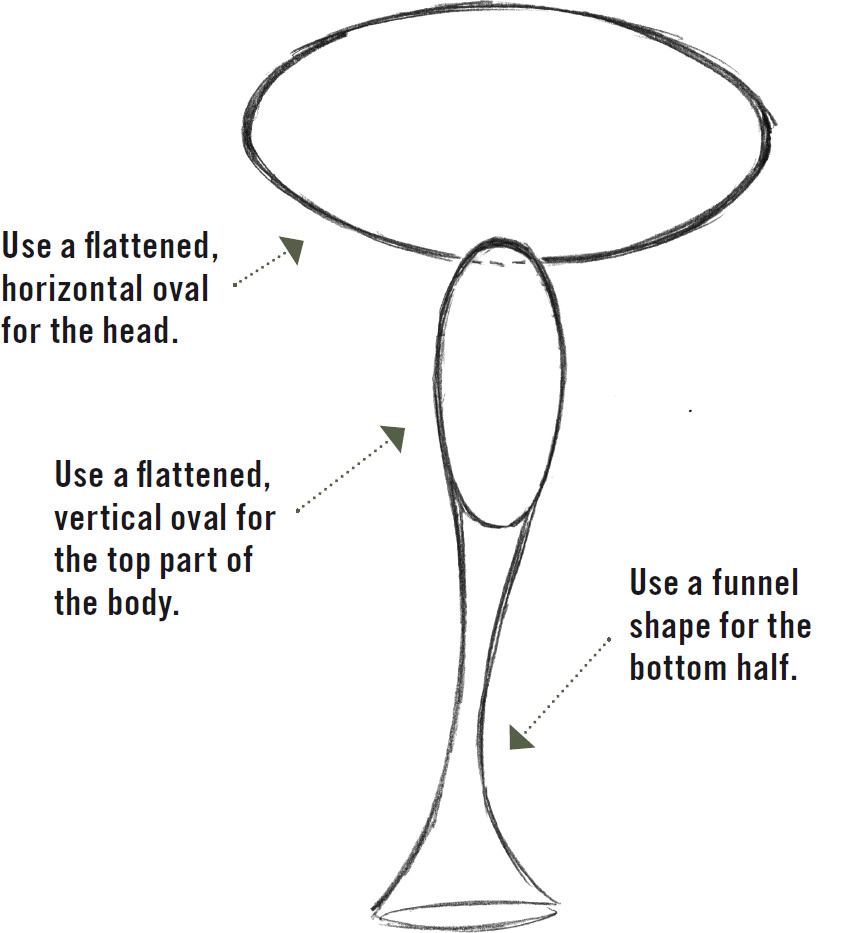

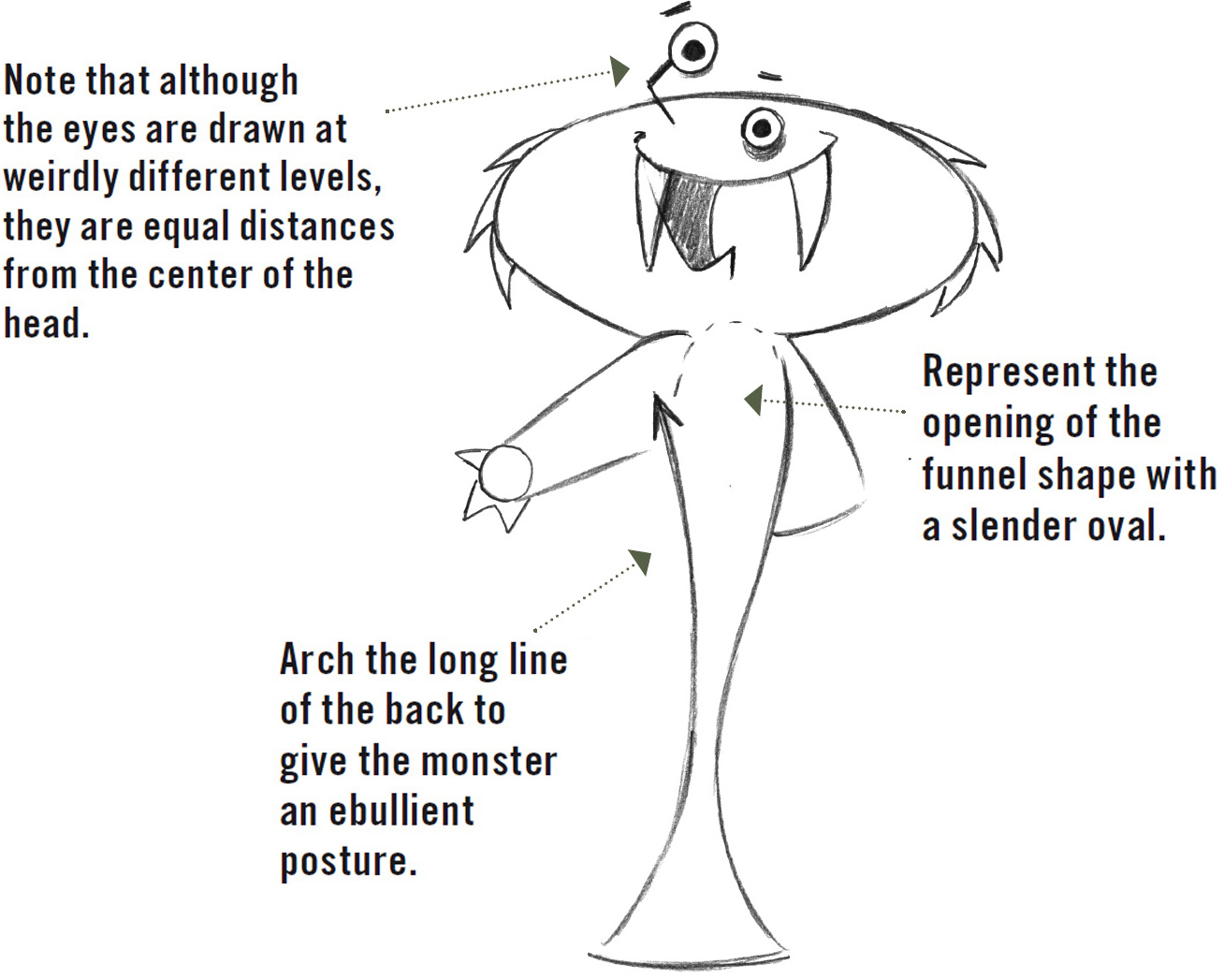



“Step this way, my friends! Have no fear of getting eaten!”
The whimsical monsters of dreams and nightmares are often depicted as friendly, but not a “let’s play tennis” type of friendly. When you find yourself confronted by a nightmare monster, the best thing to do is to think about kale and turnips and try not to look yummy.
Although numerous physical traits have been used to create the weird and beguiling look of this monster, they don’t clutter up the character design. Once again, simple is better.
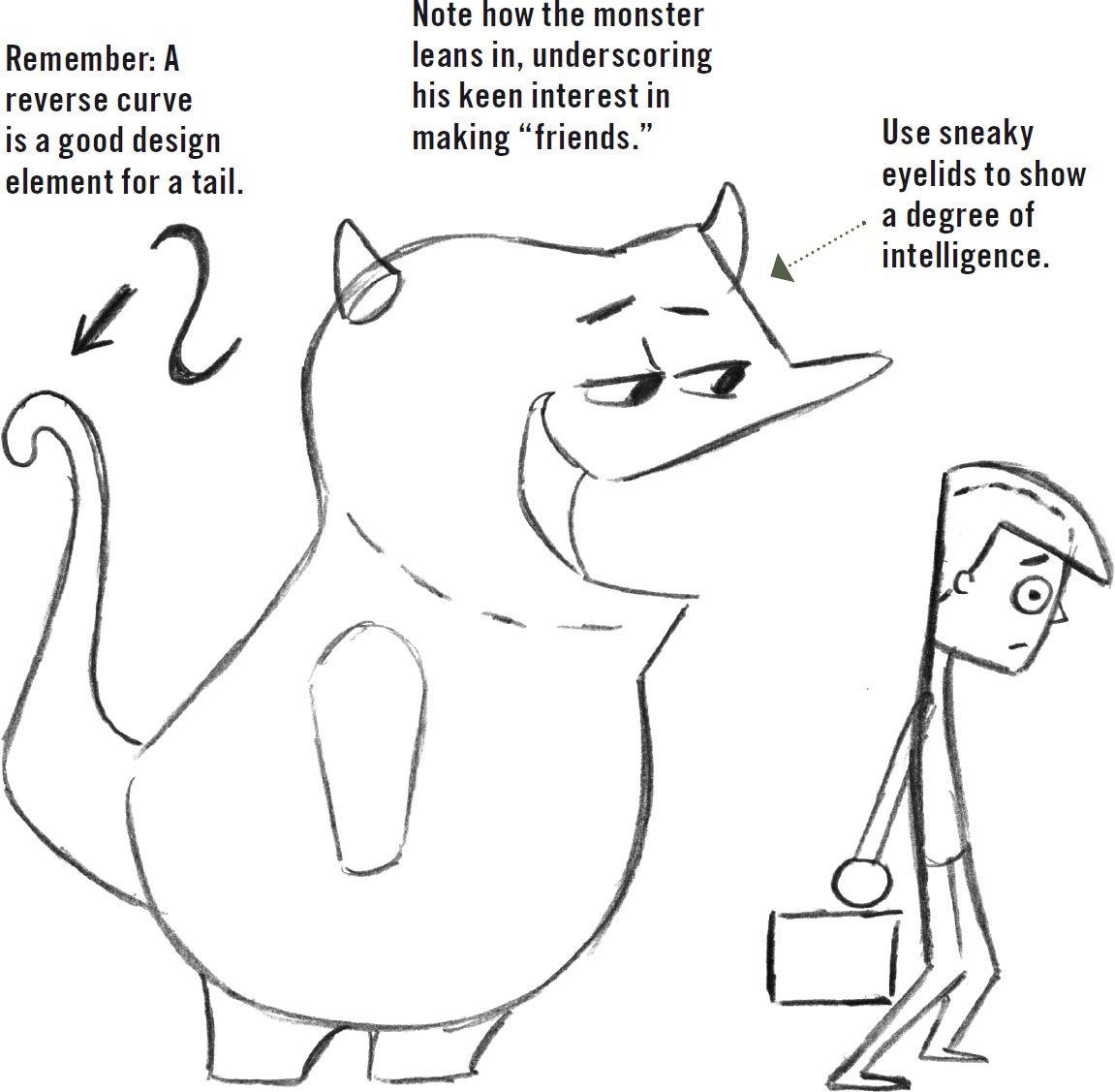

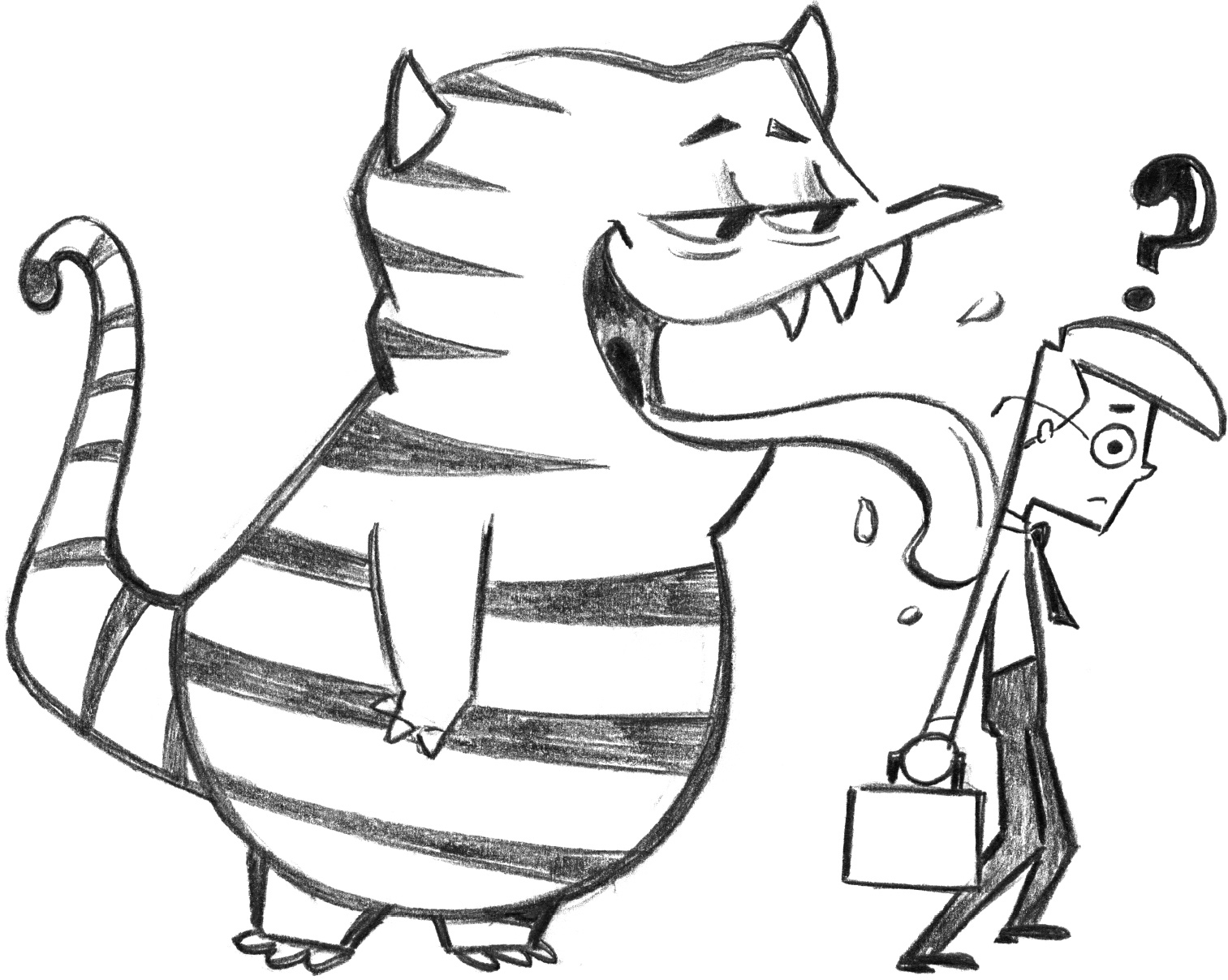

Tiny horns are funny on a big character because they look particularly useless.
SIMPLIFIED PHYSICAL TRAITS
• The monster’s height relative to a human
• Corpulence
• Carnival-like stripes
• Sly expression
• Extralong tongue
• A funny curl at the end of its tail
• Tiny horns
• A row of choppers